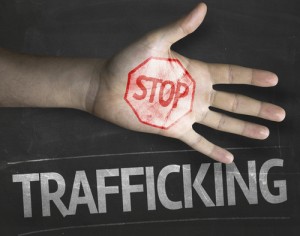 The Oklahoma Bureau of Narcotics and Dangerous Drugs (OBNDD) was granted the expanded investigative authority to include Human Trafficking-related offenses by the Oklahoma Legislature on November 1st, 2012. The OBNDD organizational restructuring created a state-wide unit dedicated to Oklahoma Human Trafficking investigation. The National Human Trafficking Resource Center reported 292 calls for help from the state of Oklahoma in 2013, ranking Oklahoma 26th in the nation for the most calls received by individual states.
The Oklahoma Bureau of Narcotics and Dangerous Drugs (OBNDD) was granted the expanded investigative authority to include Human Trafficking-related offenses by the Oklahoma Legislature on November 1st, 2012. The OBNDD organizational restructuring created a state-wide unit dedicated to Oklahoma Human Trafficking investigation. The National Human Trafficking Resource Center reported 292 calls for help from the state of Oklahoma in 2013, ranking Oklahoma 26th in the nation for the most calls received by individual states.
Human Trafficking In Oklahoma
The Oklahoma Bureau of Narcotics and Dangerous Drugs held a free, public seminar on human trafficking April 9th, 2015 at the Sam Noble Museum of Natural History. Hosting the event in the Kerr Auditorium was Michael Snowden, agent in charge of the Human Trafficking Division. OBNDD Director Darrel Weaver, and Public Information Officer Mark Woodward were also in attendance.
The meeting began promptly at 7 P.M., and approximately 75 people from the community were in attendance.
The seminar was designed to raise public awareness of human trafficking in the state of Oklahoma—what it is, how victims are lured into it, and what prevention actions a community can take. According to Snowden, public awareness of human trafficking is a large part of the program to prevent it.
We learned that Oklahoma residents are very susceptible to human trafficking dangers, especially due to Oklahoma’s proximity to the border of Mexico and the state’s highway system. These two factors contribute to Mexican cartel-linked human and drug trafficking groups using Oklahoma as a base for their human and drug trafficking activities.
Oklahoma Human Trafficking Prevention
The OBNDD informed seminar attendees on the forms of human trafficking and the signs that indicate someone may be a human trafficking victim. Information on available resources was also shared.
One important fact we learned is that traffickers are looking for vulnerable women—and children. It makes it all the more important to raise public awareness so that we can protect individuals who may not be able to protect themselves.
Information was presented at the seminar that social media is a tool used by human trafficking predators to befriend vulnerable victims. It was noted that women often do not realize they are being trafficked until the point in time when they want to get out of a relationship—and the trafficker will not allow them to do so.
Snowden shared with seminar attendees that traffickers make billions of dollars through force, fraud or coercion. There are an estimated 20.9 million human trafficking victims worldwide.
The seminar effectively raised our awareness of human trafficking in Oklahoma, and the importance of paying attention to, and remaining aware of what is going on around us.
The fact that we need to pay attention to the kids and youth around us; what is happening in their social lives; what is happening in youth groups; the social skills our children have–or may be lacking; all of these are important factors in recognizing the signs of a human trafficking victim.
The main thing I noted was the link between drug trafficking and human trafficking, and Oklahoma’s vulnerability to both make it all the more important for Oklahoman’s to learn the facts and work together as a united force in its prevention.
I encourage anyone who has questions about Human Trafficking in Oklahoma to contact the Oklahoma Bureau of Narcotics and Dangerous Drugs Human Trafficking Division for answers. And if you suspect someone is a victim of Human Trafficking, please call their toll-free Tip Hotline at 1.855.617.2288.
Together, we can make a difference.